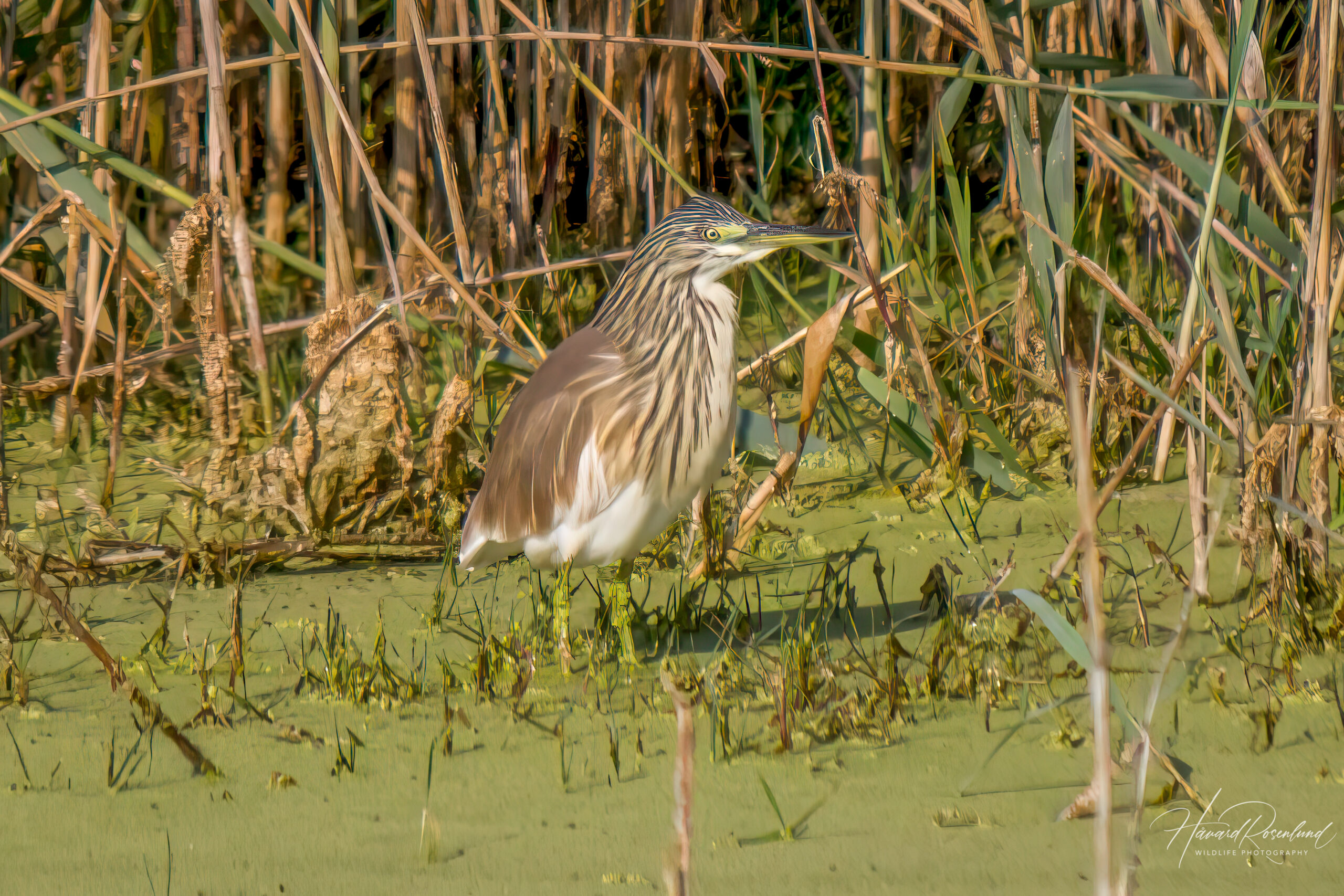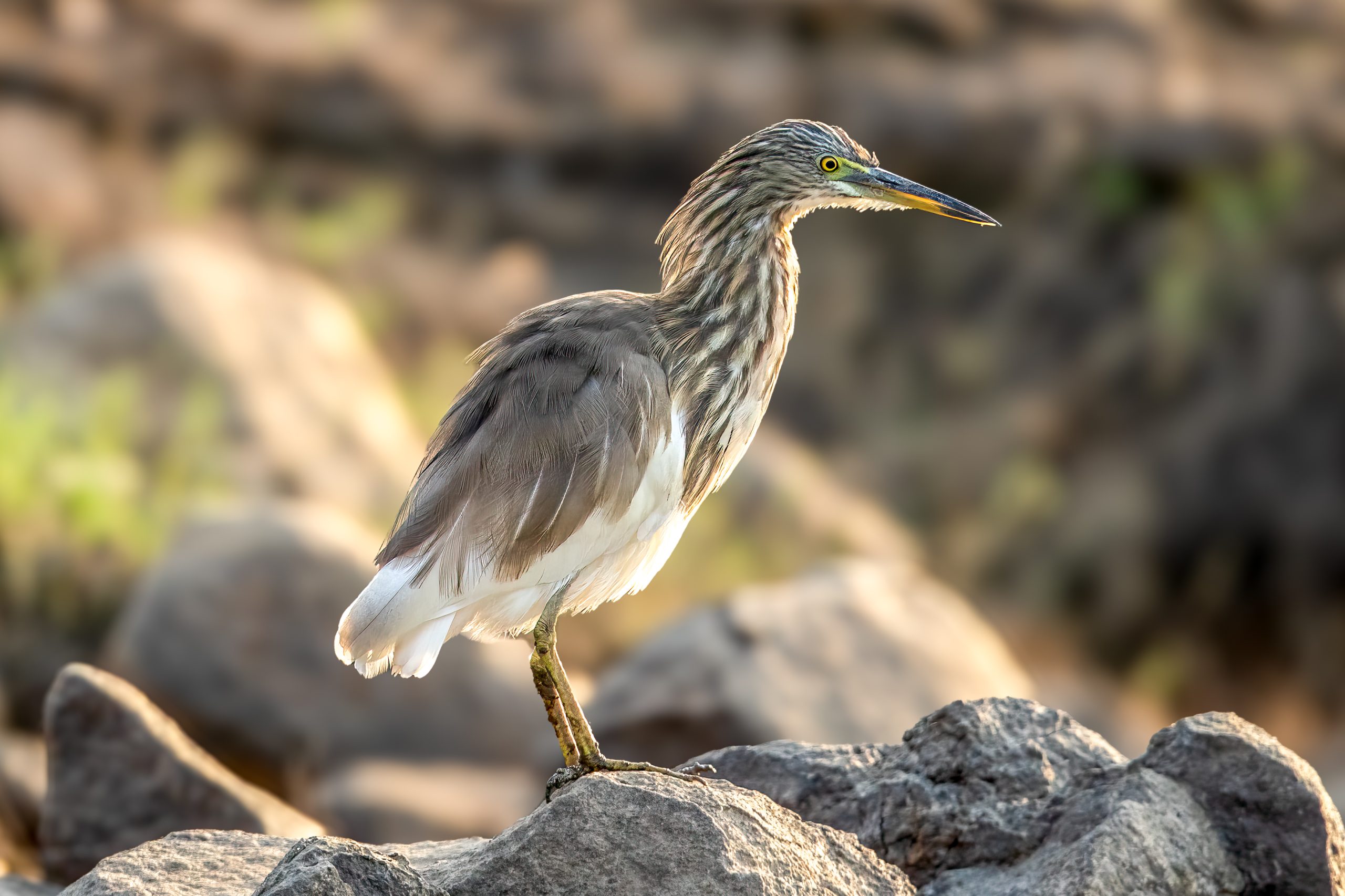Description
The squacco heron (Ardeola ralloides) is a small heron found in parts of Europe, Asia, and Africa, particularly in the Mediterranean regions. It measures about 44-47 cm (17.3-18.5 in) in length, with a wingspan of approximately 80-92 cm (31.5-36.2 in). Its plumage is predominantly creamy-white, with a brown back and striped head during non-breeding seasons, transforming to a rich, golden-brown with long neck plumes in breeding season. This heron is characterized by its short neck, long, sharp bill, and yellowish legs. It is smaller than the cattle egret (Bubulcus ibis), which is also more white in coloration. The name ‘Squacco’ comes from the Italian word “sguacco,” a local name for the species.
Diet & habitat
Squacco herons favor marshy wetlands, rivers, and lake areas, particularly with dense vegetation. They are adaptable and may occasionally be seen in agricultural lands or near coastal lagoons. Their diet mainly consists of fish, amphibians, and insects. They hunt by standing still at the water’s edge and quickly striking with their bill when prey comes within range. Their hunting technique is a blend of patience and precision, often leading to successful captures.
Nesting
The breeding season for squacco herons varies depending on their location. The European and Middle Eastern populations breed in the Northern Hemisphere spring and summer, before they migrate to Africa, whereas some African populations do not migrate and breed in the local rainy seasons. During courtship, squacco herons perform elaborate displays, including neck stretching and bill clattering, to attract mates.
They are colonial nesters, often building nests in reeds or low trees near water bodies. The nests are constructed from twigs and lined with finer materials. Females lay 3 to 4 eggs, which are incubated for about 21-25 days. Both parents participate in incubation and feeding the young. The fledging period is around 35-40 days after hatching, after which the juveniles become independent.
Status
The population of squacco heron appears stable, though it faces threats from habitat destruction and pollution. Conservation efforts are focused on preserving wetland habitats and monitoring population trends to ensure the species does not become threatened. It is listed as least concern on the IUCN Red List.





